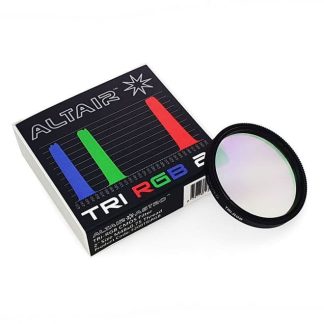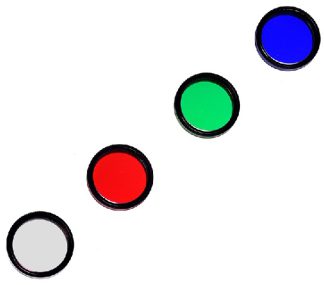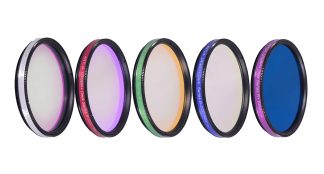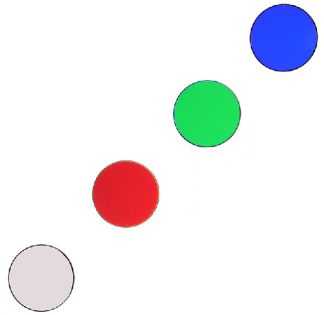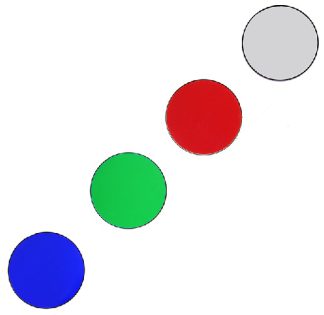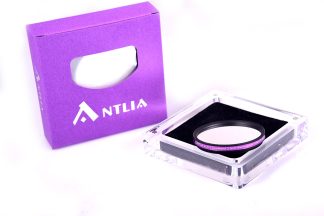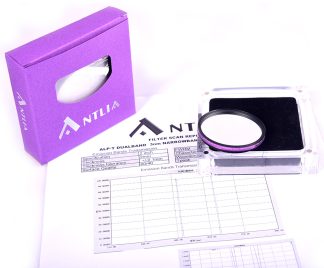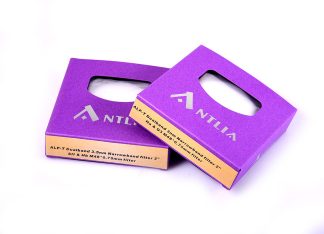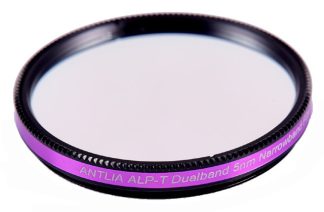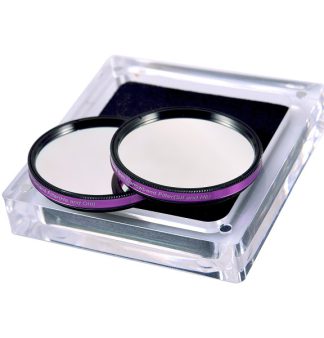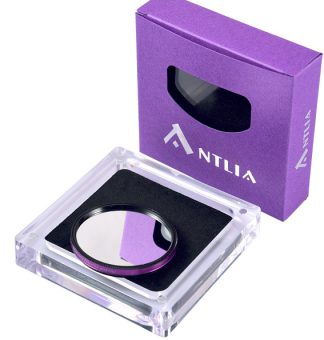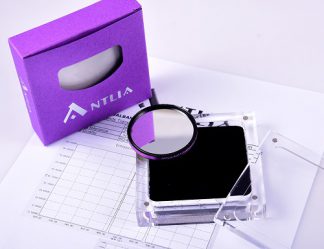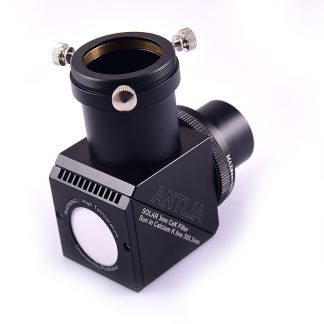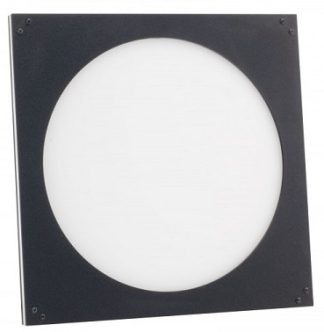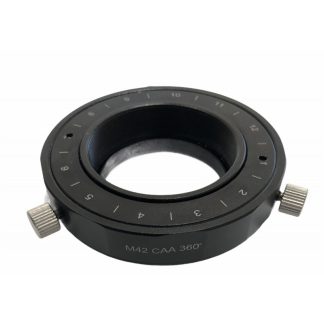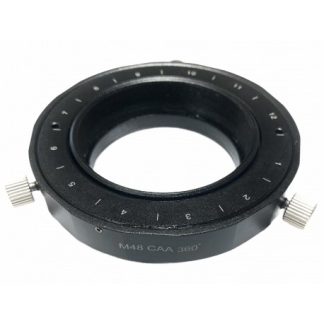Astrophotography
Take breathtaking photos of galaxies, nebulae, planets and more with our wide range of astrophotography cameras, accessories and matching telescopes.
Finding the right astrophotography camera can be a challenging process. Which telescope supports an astrophotography camera and which accessories do I need for this? We are happy to answer all these questions personally in our showroom in Amstelveen. If you prefer to look further for yourself, click the “Read more” button and see which astrophotography camera suits you best.

Buy an astrophotography camera that suits me
As with most astronomical equipment, your choice strongly depends on which object you want to photograph. There is therefore no universal camera that is the best at everything. What does apply is that if you want to photograph deep space objects, a cooled astrophotography camera is the right choice for you.
Moon and planets
If you want to image objects in our solar system such as the moon, planets or sun, a camera with a small sensor and a high frame rate will work wonders for you. Since these are extremely small objects, it is extremely important that even the smallest detail is captured. In addition, these cameras require a long focal length, because even the turbulence in the atmosphere can have a major effect on how detailed the final image will be.
Check out here the astrophotography cameras that we think are best suited for photographing the moon and planets.

Deep Sky objects
For capturing Deep Sky objects, it is crucial that as much light as possible is captured by the camera. For this it is best to use a cooled camera which counteracts background noise at long exposure.
Cameras with higher quantum efficiency, larger pixel sizes, higher full well capacity and less reading noise will ultimately produce cleaner images.
Check out here the astrophotography cameras that we think are best suited for photographing Deep Sky objects.

Sun
These cameras are best used for photographing the sun.
Check out here the astrophotography cameras that we think are best suited for photographing the sun.

All-Sky
All-sky cameras have a wide-angle or ‘fisheye’ lens. This allows the entire sky to be captured to the horizon. You can use these cameras on any clear night. These cameras are often set up in a network.
Check out here the astrophotography cameras that we think are best suited for All Sky photography.

Guide cameras
Guide cameras, in combination with a long exposure time, provide crystal clear deep space images with sharp, round stars. With a long exposure time, minor polar alignment errors or other inherent mounting issues can cause the stars to drift and appear as star trails. Apart from the main image camera, guide cameras are very effective at preventing these star trails. Warning your mount if it starts drifting off course keeps images sharp and clear.
By using guidance you can get double, triple or even longer exposure lengths. As an added bonus, most guide cameras can also double as planetary cameras.
Check out here our best guide cameras.

Frequently Asked Questions
Which camera is best suited for astrophotography?
If you choose one of the latest refrigerated astronomy cameras, they will perform very well for (deep sky) astrophotography, however, your choice depends on what exactly you want to photograph and with what equipment. Of course your budget also plays a big role.
Finding the right astronomy camera for your setup therefore depends on a few different factors:
– Do you want to make images in color (for beginners) or monochrome (for advanced users)?
– What is the pixel scale at the focal length of your telescope?
– What size image circle can your telescope / corrector cover?
– What’s your budget?
Which camera is best suited for deep sky photography?
Technically, monochrome cameras are inherently better than color cameras because of their sensor design. Black and white cameras produce a cleaner and slightly sharper image than color cameras.
Monochrome cameras are more expensive and require a filter wheel / tray and expensive filters to produce a color image, where color cameras can produce color images directly.
While black and white cameras still prevail, color camera technology and astronomy filters have gotten so good in recent years that it can be difficult to tell the difference between two images taken from each camera type.
If you are just starting out with astrophotography, we recommend starting with a color camera. If you’re already an experienced astrophotographer, consider upgrading to a monochrome CMOS or CCD camera.
How do I attach a camera to my telescope?
This depends on the type of camera you are using. Here are some of the most common cameras and ways to mount them:
– Smartphone: by means attach a smartphone adapter to an eyepiece
– DSLR / mirrorless with APS-C / smaller sensor: uses a T-ring
– DSLR / mirrorless with full-frame sensor: uses a wide / M48 T-ring
– Standard astronomy cameras: usually attached via supplied adapters
– Mini planetary cameras
Which is better for deep sky astrophotography, a DSLR or a dedicated astronomy camera?
Dedicated astronomy cameras with cooling will outperform DSLR / mirrorless cameras as they can keep the sensor cool over long exposures. This is critical to keep the noise level down.
All of this helps in capturing extremely blurred details, making deep sky images really come to life. However, unlike DSLR / mirrorless cameras, dedicated astronomy cameras don’t have a screen or built-in battery. This means that you need a computer and a power source to take pictures.
What is the difference between a CMOS and a CCD camera?
CCD sensors provide high quality images with little noise. CMOS sensors are traditionally more sensitive to noise.
– Because each pixel on a CMOS sensor has several transistors next to it, the light sensitivity of a CMOS chip is usually lower. Many of the photons hitting the chip hit the transistors instead of the photodiode.
– CMOS traditionally consumes little power. Implementing a sensor in CMOS yields a low power sensor.
– CCDs use a process that consumes a lot of power. CCDs consume as much as 100 times more power than an equivalent CMOS sensor.
CMOS chips can be fabricated on almost any standard silicon production line, so they are usually extremely inexpensive compared to CCD sensors.
– CCD sensors have been mass-produced for a long time, so they are more mature. They usually have a higher quality and more pixels.
CMOS sensors are just improving to the point where they are almost on par with CCD devices in some applications. CMOS cameras are usually less expensive and have a long battery life.
Easily order an astrophotography camera including accessories online
Have you found the astrophotography camera or accessory you want to buy? Then simply order it online.
You are also very welcome in our showroom in Amstelveen, on Monday to Friday from 10:00 to 17:00 and on Saturdays from 10:00 to 16:30.
We are happy to tell you more about the astrophotography cameras that we have ready for you. We are the specialist when it comes to a camera for beginners, but also for professional stargazers. We are happy to tell you more about all our well-known brands.
-
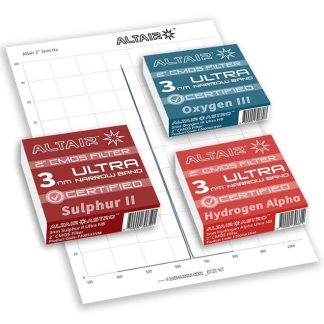
Altair 3nm ULTRA SHO filter set
€ 1.385,00Type: NarrowbandMounting: MountedSize (mm): 2 inchReady to ship in 24h -
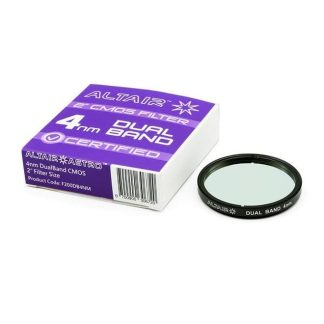
Altair Ha OIII DualBand Ultra 4nm filter 2 inch
€ 499,00Type: Dual-NarrowbandMounting: MountedSize (mm): 2 inchReady to ship in 24h -
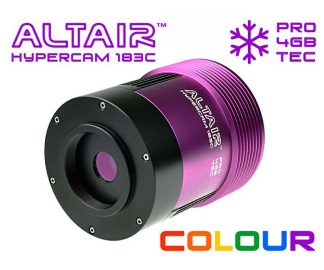
Altair Hypercam 183C PRO TEC COOLED Colour
€ 1.090,00Sensor kind: CMOSSensor size: OnbekendSensor dimensions: 13.2 x 8.8Ask us for the delivery time -
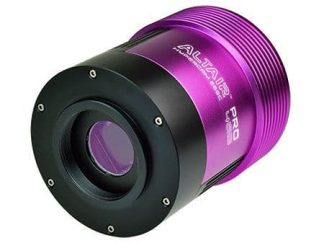
Altair Hypercam 269C Pro Tec cooling colour camera
€ 1.225,00Sensor kind: CMOSSensor size: 4/3"Sensor dimensions: 17.4x13.1mmReady to ship in 24h -
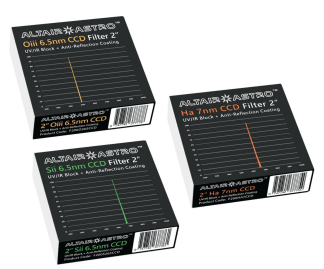
Altair Premium SHO 2 inch COMBO Filter Set
€ 659,00Type: NarrowbandMounting: MountedSize (mm): 2 inchReady to ship in 24h -
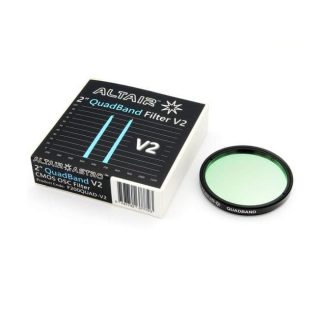
Altair QuadBand 2 inch CMOS optimized filter
€ 229,00Type: LichtvervuilingMounting: MountedSize (mm): 2 inchReady to ship in 24h -
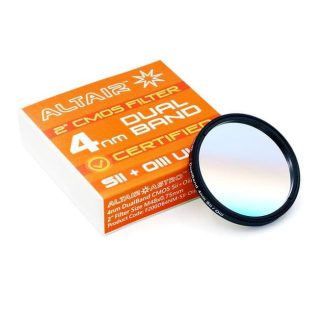
Altair SII OIII DualBand Ultra 4nm filter 2 inch
€ 499,00Type: Dual-NarrowbandMounting: MountedSize (mm): 2 inchReady to ship in 24h -
Altair TRI-RGB 2 inch filter
€ 239,00Type: LichtvervuilingMounting: MountedSize (mm): 2 inchReady to ship in 24h -
Antlia 1.25 inch LRGB-V Pro series
€ 379,00Type: L-RGBMounting: MountedSize (mm): 1.25 inchReady to ship in 24h -
Antlia 2 inch LRGB-V Pro series
€ 595,00Type: L-RGBMounting: MountedSize (mm): 2 inchAsk us for the delivery time -
Antlia 2 inch LRGBR+ dark series filter set
€ 878,90Type: L-RGBMounting: MountedSize (mm): 2 inchReady to ship in 24h -
Antlia 31 mm LRGB-V Pro series
€ 399,00Type: L-RGBMounting: UnmountedSize (mm): 31 mmReady to ship in 24h -
Antlia 36 mm LRGB-V Pro series
€ 455,00Type: L-RGBMounting: UnmountedSize (mm): 36 mmReady to ship in 24h -
Antlia ALP-T 2 inch 3.5nm SII en Hb dual band filter
€ 499,00Type: Dual-NarrowbandMounting: MountedSize (mm): 2 inchReady to ship in 24h -
Antlia ALP-T 2 inch 3nm dual band filter Ha OIII
€ 499,00Type: Dual-NarrowbandMounting: MountedSize (mm): 2 inchReady to ship in 24h -
Offers
Antlia ALP-T 2 inch 3nm Ha&OIII en SII&Hb 3.5nm dual band filter set
Sale! Original price was: € 998,00.€ 899,00Current price is: € 899,00.Type: Dual-NarrowbandMounting: MountedSize (mm): 2 inchReady to ship in 24h -
Winter deal
Antlia ALP-T 2 inch 5nm dual band filter
Sale! Original price was: € 499,00.€ 469,00Current price is: € 469,00.Type: Dual-NarrowbandMounting: MountedSize (mm): 2 inchAsk us for the delivery time -
Offers
Antlia ALP-T 2 inch 5nm Ha&OIII en SII&Hb dual band filter set
Sale! Original price was: € 998,00.€ 899,00Current price is: € 899,00.Type: Dual-NarrowbandMounting: MountedSize (mm): 2 inchAsk us for the delivery time -
Antlia ALP-T 2 inch 5nm SII en Hb dual band filter
€ 499,00Type: Dual-NarrowbandMounting: MountedSize (mm): 2 inchAsk us for the delivery time -
Antlia ALP-T highspeed 2 inch 5nm dual band filter
€ 499,00Type: Dual-NarrowbandMounting: MountedSize (mm): 2 inchReady to ship in 24h -
Antlia Herschel Diagonaal met 3nm Calcium Filter voor zon fotografie
€ 429,00Type: Antlia Herschel Wedge Calcium 3nm filterReady to ship in 24h -
Artesky flat box 250mm LED panel
€ 329,00Type: Flat panelAsk us for the delivery time -
Artesky Rotator M42 360 Degree Rotate
€ 69,00Type: Spacers, RotatorM42: YesReady to ship in 24h -
Artesky Rotator M48 360 graden roteren
€ 69,00Type: Spacers, RotatorM48: JaReady to ship in 24h
